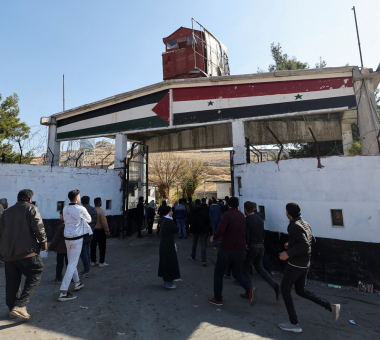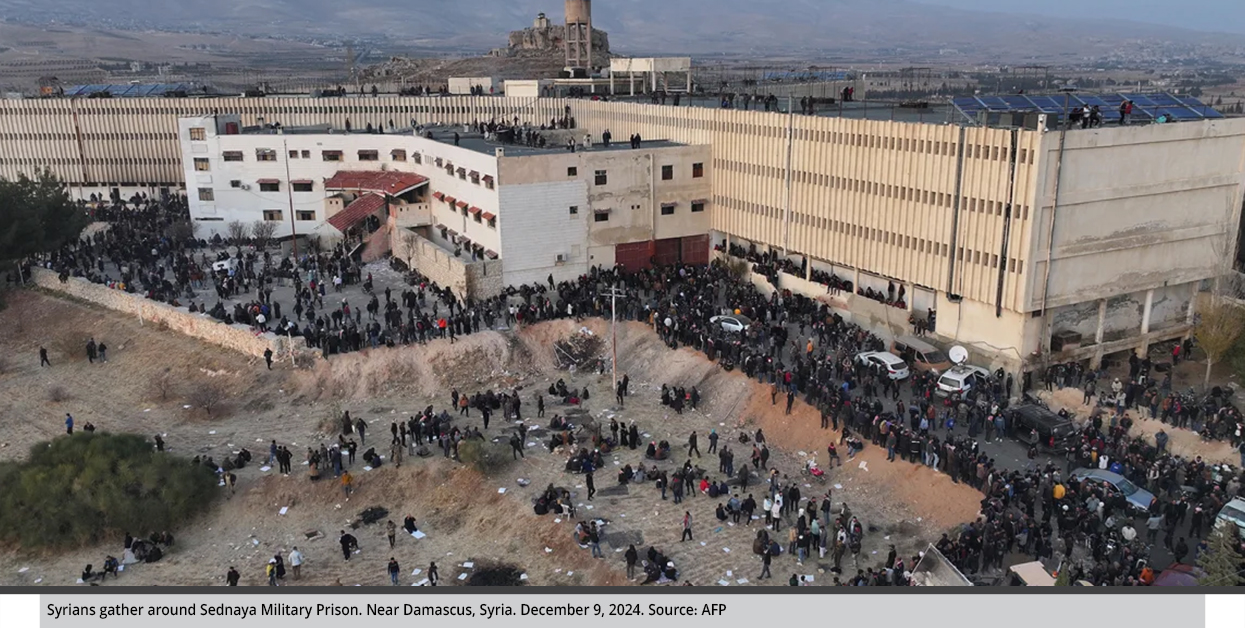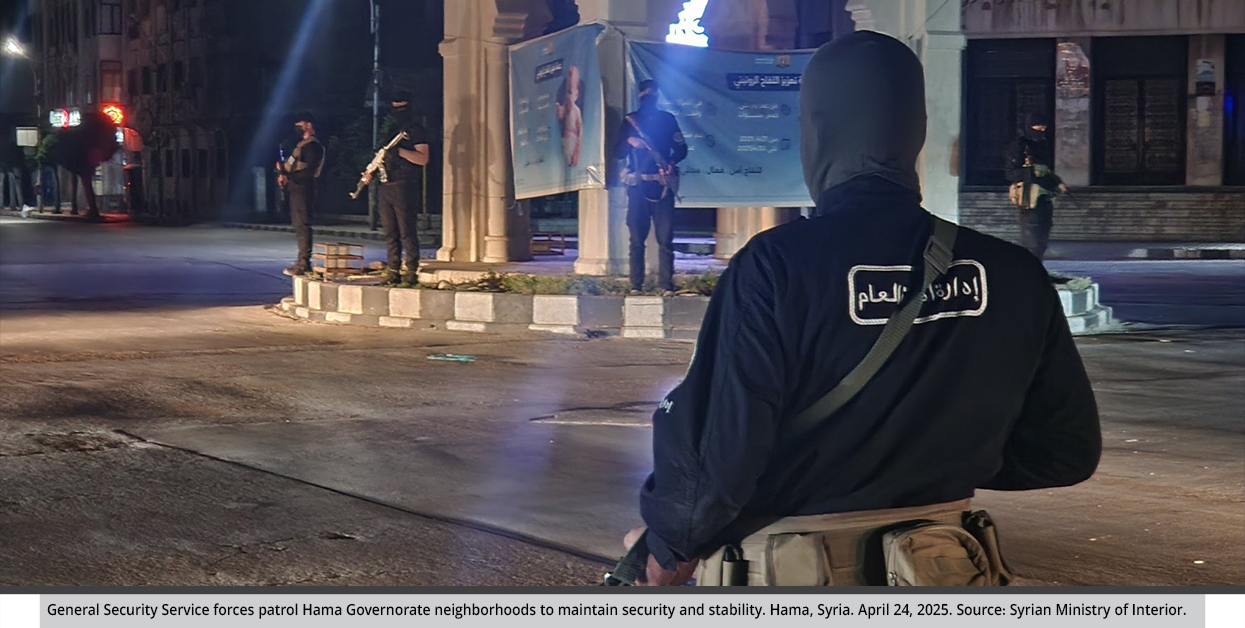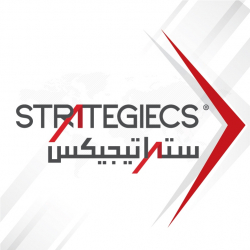Syrian Political Consciousness in Transition: Structure and Stakes
Syrian political consciousness is undergoing a profound transformation following the change of the Ba’ath regime in 2024, after decades of security-driven rule and totalitarian dominance. The 2011 movement in Syria during the so-called “Arab Spring” marked a shift in collective awareness, expressing a desire for liberation and citizenship, but it collided with authoritarian responses that produced a state of repression. In the absence of a unifying national framework, trajectories vary between currents of rupture, reconciliation, and religious projects, while Syria’s future remains contingent on the society’s ability to overcome division and build a new social contract.
by STRATEGIECS Team
- Release Date – Aug 26, 2025

This opinion article is part of the series: Syria.. Transformations, Variables, and the Future of the State of Uncertainty
In terms of redefining the social contract that governs the relationship between society and the state as well as the individual’s relationship with politics and the state (and his or her value within this system), the 2014 regime change represents a pivotal moment in Syrian political consciousness both at the individual and societal levels. This comes after Syrians experienced six decades of Ba’ath Party rule characterized by authoritarianism, centralization, security dominance, and the instrumentalization of Syria in regional conflicts.
Assessing the transition in political consciousness and examining its challenges and prospects requires an understanding of its multiple manifestations, as well as the duality of fear during this transitional phase—between the return of repression and its normalization, and the fears of state collapse and fragmentation.
Rationalizing Authoritarianism (1970–2024)
The era of Ba’ath Party rule encompassed two periods: President Hafez al-Assad (1970–2000) and his son, Bashar al-Assad 2000–2024), which ended with his departure from the country following the entry of armed opposition forces into Damascus on December 8—a surreal event that left deep marks on individual and societal consciousness, creating internal divisions between supporters and opponents that gave rise to a complex set of challenges facing both the state and citizens.
Since the 1970s, Hafez al-Assad established an authoritarian system based on the comprehensive dominance of security, military, and intelligence institutions. This elevated a totalitarian security mentality over the political sphere, which was confined to the Ba’ath Party. The regime relied on three pillars: loyalty of the security apparatus, especially in sensitive positions; alliances with selected economic and sectarian elites; and the use of ideological-socialist discourse as a legitimate cover for domination.
This discourse emphasized resistance against Israel and the West and adopted a formal Arab nationalist-socialist rhetoric, supported first by the Soviet Union and later by Russia. The regime went to great lengths to suppress any opposition, with the brutality of certain events—such as the 1982 Hama massacre—remaining a lasting part of Syrian collective memory.
Economically, the system was built on the revenues of a security-dominated state, giving the apparatus wide control over resources and economic activities. While formal socialist policies were implemented, the 1990s saw attempts at liberalization that ultimately remained largely superficial and not institutionalized.
The regime continued to rely on the same pillars after the transfer of power to Bashar al-Assad in 2000, despite his attempts to introduce reforms and allow limited, short-term openness. The “Damascus Spring” movement from 2001 to autumn 2002 produced cultural outcomes, such as the United Nations [UNESCO] choosing Damascus as the Arab Capital of Culture in 2008, but political change remained limited, with no shift in the security-oriented approach to managing political affairs.
The real transformation occurred economically, as the shift toward capitalism became more pronounced with both the rise of a business elite close to the regime and the growth of a private sector linked to power. Meanwhile, the public sector continued to suffer from exhaustion, widespread corruption, and bribery.
This situation underwent a massive change after 2011, when the regime faced an existential threat and a war that lasted nearly 14 years, turning the financial system into a war economy dominated by warlords. During this period, the black market expanded aggressively, particularly in drug and Captagon trafficking managed by the regime and Iranian-backed factions, including Lebanon’s Hezbollah. The repercussions of this period extended to political and social spheres, threatening to drag the country into civil and sectarian war.
Overall, the preceding 60-year era shared common features across the two periods of al-Assad rule:
- Institutionalized security dominance, relying on personal loyalty over competence and entangling political and economic elites in networks of corruption to ensure their allegiance.
- A covert sectarian discourse, despite nationalist slogans, the regime relied on regional (urban/rural) balances to undermine any cohesive opposition.
- Absolute centralization, which confined major decision-making to a narrow circle around Al-Assad family while systematically weakening state institutions in favor of parallel networks of interests.
- Politicization of the regional conflict, using the conflict with Israel and the West as a tool to bolster internal legitimacy and justify domestic repression.

Syrian Political Consciousness Under the Former Regime
At the collective level, public political consciousness in Syria was shaped within an environment steeped in security dominance and repression. The security apparatus, consisting of 18 branches, served as an instrument of strict governance and control over public space. This drove many Syrians to adopt complex psychological and social-behavioral mechanisms in order to cope with the political reality. These ranged from a victim mentality or choosing silence as a survival strategy to retreating into the personal and private spheres (work and family) as a refuge from politics.
This consciousness also crystallized within a besieged mindset and the prevailing political culture. In a political culture rooted in coercion, citizens live under the weight of fear, repression, imprisonment, and execution. The Syrian identity was imposed within a unified Ba’athist framework, creating a duality in political discourse—public expressions of loyalty coexisting with private dissent—and fostering a lack of trust in institutions under a rent-based security economy in which loyalties are secured through privileges and small elites control scarce assets that they rent to the lower classes for a tidy profit.
This environment encouraged the proliferation of “subjects” obedient to the regime’s singular narrative (enforced through media and educational indoctrination) at the expense of the “citizen” model in which the relationship between society and the state is defined by obedience and loyalty rather than rights. This, in turn, constrained intellectual diversity.
At the individual level, a state of political isolation and disengagement prevailed, with politics generally seen as a dangerous sphere to be avoided unless one was part of the regime’s institutions or power network. Individual attitudes ranged from forms of loyalty and superficial political participation in sham referendums and elections without real competition to tolerating the status quo as the lesser evil when measured against the regime’s rhetoric of chaos as an alternative. Certain individuals and groups resorted to feigned loyalty, political opportunism, and participation in corruption networks as a means of survival.
On the other hand, the concept of national identity imposed by the authorities—which was not the result of a social contract or equal citizenship—led individuals to gravitate toward partial or sub-individual identities, such as sectarian or tribal affiliations, as sources of security in the absence of fair institutional protection. In this way, narrow loyalties became substitutes for national belonging, deepening identity fragmentation and undermining the individual’s political effectiveness.
2011: From Exhaustion to Regime Change
The year 2011 marked a pivotal moment in the formation of Syrian consciousness. Citizens taking to the streets broke through the wall of fear that had dominated public life for decades. The movement was not merely a political protest; it represented a structural shift in collective consciousness, emerging as a psychological and social rebellion against the culture and state of fear entrenched by the security state. Its slogans—centered on freedom, dignity, and justice—reflected a clear break from the vocabulary of Ba’athist domination. They expressed a political discourse that transcended sectarian alignments and narrow identities, laying the foundation for a collective vision based on national solidarity across sectarian and regional divides.
However, the early signs of this shift in collective consciousness soon collided with authoritarian backlash that reproduced the state of security-based repression. The regime framed the popular movement within a narrative of sectarianism and chaos, using the rhetoric “it’s us or terrorism and disorder” to help transform the struggle from a politically unified revolution into a multidimensional civil conflict.
With this escalation, the political sphere became a field of forced polarization in which Syrians aligned along a threefold division: supporters of the regime, motivated by fear or sectarian loyalty; revolutionaries demanding radical change and the overthrow of the regime; and a silent majority adopting a neutral stance or rejecting violence from all sides.
However, the regime change after decades of security-driven rule brought an unprecedented shift in the Syrian political landscape, confronting society with a new reality that did not match the scenario long depicted by the regime’s dire warnings of what will be the country’s fate in its absence. Although this transition has not yet produced a clear alternative political structure, it has opened the way for a transitional phase whose contours are still taking shape. In this context, Syrian political consciousness—both individual and collective—is undergoing a stage marked by divergent narratives as it raises renewed questions about authority and citizenship—without settling on a unified vision—in a transitional reality dense with multiple stakes and challenges.
At the collective level, the collapse of the security state, with its symbols and repressive structures, shocked the majority of Syrians. On one hand, waves of excessive optimism emerged, particularly among groups that saw the regime’s fall as the beginning of a new democratic era embodying citizenship, justice, and public freedoms. On the other hand, feelings of anxiety and suspicion prevailed among others, driven either by fear of collective reprisals, concerns about the rise of political Islam, or the long-standing habit of living under fear and compliance.
As a result of this divergence, collective political consciousness is being reshaped under the weight of a distorted political culture still dominated for some by conspiratorial interpretations as a psychological defense mechanism. Simultaneously, it has been caught in an struggle between the memory of repression and the desire to align with discourses of reconciliation and change.
Within this space, Syrians are engaged in redefining national identity on unifying foundations and narratives that transcend partisanship and sectarianism. This is all being done amid the tensions of three main currents: revolutionary, advocating a radical break with the old regime; reconciliatory, calling for the inclusion of all without exclusion; and Islamic, seeking to build a religiously oriented political identity.
In this context of symbolic-political division, collective consciousness experiences tension between a discourse that sees accountability and transitional justice as essential for cohesion, and another aligned with rhetoric of revenge—a tension fueled by the absence of a truly unifying national framework.
Relations with the outside world also pose an additional challenge for political consciousness in its transitional phase. Public awareness varies between viewing regional and international support as a necessary, temporary measure to ensure stability and legitimacy, and fearing dependency and political tutelage. This reflects the complexity of the national sovereignty equation in the post-authoritarian context and its repercussions.

At the individual level, the transformations appear even more tense and nuanced, as individual political consciousness passes through a transitional phase oscillating between a relative sense of liberation and a lingering fear ingrained by decades of security control. In theory, it has become possible in Syria to express opinions and engage in public political debate, yet the residue of educational and psychological repression remain, manifesting in various forms of hesitation and self-censorship.
Today, the Syrian individual experiences a state of cautious hope, reflected in initial efforts to redefine his or her relationship with politics—not as an existential threat, but as a tool for peaceful change. Tangible attempts are emerging to shift the understanding of citizenship from being a subject subservient to authority to being a member of groups that participate in its construction and hold it accountable. This includes a redefinition of loyalty to the political system, moving from sectarian alignment toward a critical, conditional loyalty based on the transitional authority’s ability to combat corruption, achieve justice, and enhance freedoms.
Despite the relative short duration of the transitional phase compared to the long rule of the former regime, the features of the shift in Syrian political consciousness are expected to crystallize around three main axes.
First, the extent to which Syrians—both individuals and groups—can overcome the legacy of repression and sectarianism and establish a unifying framework that goes beyond mere tolerance to create reconciliation grounded in accountability.
Second, the performance of the transitional authority, including its ability to implement transitional justice without revenge and to carry out economic reforms that generate real opportunities for employment and reconstruction.
Third, the balanced management of the complex relationship with the outside world, preserving national sovereignty so that the need for support does not become a source of dependency or constraints.
Prospects of Transformation and Limits of Political Possibility
Based on the foregoing, it can be said that the transformations occurring in Syrian political consciousness following the regime change open up multiple possibilities that, given the range of potential outcomes still in formation, cannot be reduced to a single trajectory. These possibilities vary between the hope for the emergence of a comprehensive political project and the risk of division or the reproduction of new forms of domination. This renders Syria’s political future an open arena for competing and conflicting stakes, dependent on the nature of the choices made by local actors and external supporters.
In one of these trajectories, Syria could succeed in achieving a gradual political transition toward a pluralistic democratic system, reestablishing the social contract on inclusive civil foundations that transcend sectarian, ethnic, and regional divisions while implementing economic reforms through balanced regional and international partnerships. Within this framework, Syrian political consciousness could rebuild itself, moving beyond a culture of fear toward the horizon of citizenship and participation.
Conversely, the possibility of stumbling remains likely if the country enters a state of polarization within the current ruling coalition, particularly if conflicts escalate between hardline and moderate Islamists, and among minorities who feel fear and marginalization. Such a scenario would risk reproducing political fragility.
In the absence of national consensus and the opportunity for a comprehensive political project, Syria would remain exposed to the possibility of forming a sectarian power-sharing system or a form of decentralized governance, such as confederation or federalism. From this perspective, overcoming these potential outcomes cannot occur without three essential conditions.
First, the presence of a transitional leadership possessing political wisdom, capable of balancing the demands of the revolution with the necessities of stability, thereby protecting society from cycles of revenge and counter-revenge.
Second, effective external support that focuses on state-building without imposing tutelage or advancing external agendas.
Third, ensuring genuine participation of all segments of society in the political process, without exclusion or the reproduction of domination.
Finally, in this equation—if achieved—Syrian political consciousness could overcome a long history of marginalization and compliance to build a collective political identity that redefines pluralism in terms of significance and acceptance. It would lay the foundation for individuals capable of participation and accountability to engage in the public sphere after decades of silence and exclusion.

STRATEGIECS Team
Policy Analysis Team
 العربية
العربية